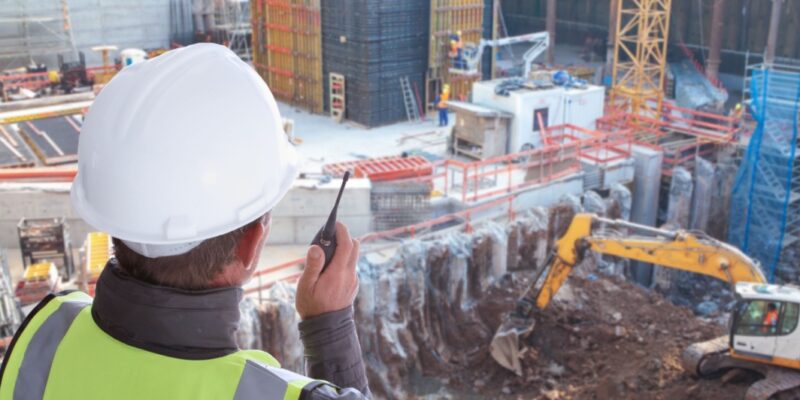Two-way radio communication has long been a foundational tool for businesses requiring dependable, real-time voice communication. From construction crews to event organizers and transportation fleets, radios have helped teams coordinate, collaborate, and respond quickly under pressure. However, today’s radios have come a long way from the crackling analog models of the past. In modern business environments, smart radio technology has emerged as a powerful communication platform that offers far more than just voice transmission.
This evolution has transformed the way organizations operate, streamlining workflows, enhancing safety, and integrating seamlessly with broader digital systems. As industries grow more complex and mobile workforces become the norm, businesses are turning to smarter, more connected communication tools to meet rising expectations.
The Limitations of Analog Systems
Traditional analog radio systems have served businesses well for decades, offering a cost-effective and simple way to stay in touch over short to moderate distances. But as businesses expanded, analog radios began to show their age. Limited range, channel interference, and lack of security were just a few of the challenges that analog users faced regularly. These radios also lacked the flexibility to support text messaging, GPS tracking, or remote monitoring—features that have become standard in modern operations.
Moreover, analog systems could not scale easily across large teams or multiple locations. When coordination extended beyond a single site or involved complex tasks, analog radios often became a bottleneck. Businesses needed a new generation of tools that could offer the clarity and adaptability of digital technologies while maintaining the ruggedness and reliability that users had come to expect.
The Rise of Digital Two-Way Radios
Digital radios marked the first major leap forward in the evolution of radio communication. These systems improved upon analog by offering clearer audio, greater coverage, and enhanced battery life. But what really set them apart was their ability to integrate with other business tools and processes. Digital Mobile Radio (DMR) systems like Motorola’s MOTOTRBO and Hytera’s digital platforms introduced features such as location tracking, man-down alerts, and text messaging—all of which expanded the role of the radio in daily operations.
For companies with growing security or compliance needs, digital radios also brought the benefit of encrypted communication. This allowed sensitive information to be transmitted without fear of interception, supporting industries like healthcare, education, and government where data privacy is critical.
Smart Radios in the Age of Integration
The most recent advancement in two-way radio technology is the emergence of smart radios. These devices bridge the gap between traditional radio systems and smartphones, providing touchscreen interfaces, LTE connectivity, Wi-Fi support, and app integration. They can run productivity and safety applications, connect to cloud-based management systems, and provide real-time data collection on equipment or personnel.
Smart radios have become central to large-scale operations where teams need to stay connected across distributed sites. For instance, logistics firms use them to manage driver locations, communicate with warehouses, and adjust routes on the fly. In hospitality, event staff can coordinate via voice, share live updates, and receive digital work orders—all on one device.
With these capabilities, smart radios have evolved into multifunctional business tools. They are no longer just for talking—they’re for tracking, monitoring, managing, and optimizing the entire communication ecosystem.
The Benefits for Modern Businesses
For organizations facing tight schedules, strict safety requirements, or customer service demands, smart radios help close the gap between operational complexity and seamless communication. They reduce downtime by keeping teams informed in real time, enhance employee safety through emergency features, and help management gain better visibility into daily operations. As part of a broader unified communications strategy, they also provide consistency across departments and job sites.
The durability of today’s professional radios means they’re built to handle harsh environments, from outdoor job sites to industrial warehouses. They are also designed with long battery life, glove-friendly controls, and loud, clear audio, ensuring they work well even in demanding conditions.
Looking Ahead
As industries become more digitized, the role of smart radios will only grow. Future advancements will likely include tighter integration with IoT systems, AI-driven analytics, and improved user interfaces that cater to specific industries. Smart radios may even act as mobile control hubs, allowing workers to operate equipment remotely or access real-time diagnostics.
Investing in the right communication system is no longer about just finding a way to talk—it’s about enabling smarter, faster, and safer operations across your entire organization.
Strengthening Communication with Highland Wireless
If your business is still relying on outdated or underpowered communication tools, it may be time to consider the capabilities of modern two-way radios. From traditional models to smart integrated systems, Highland Wireless offers expert support in choosing, installing, and maintaining the right solution for your team’s needs. Contact Highland Wireless today to learn how advanced radio communication can help your business evolve and thrive.

